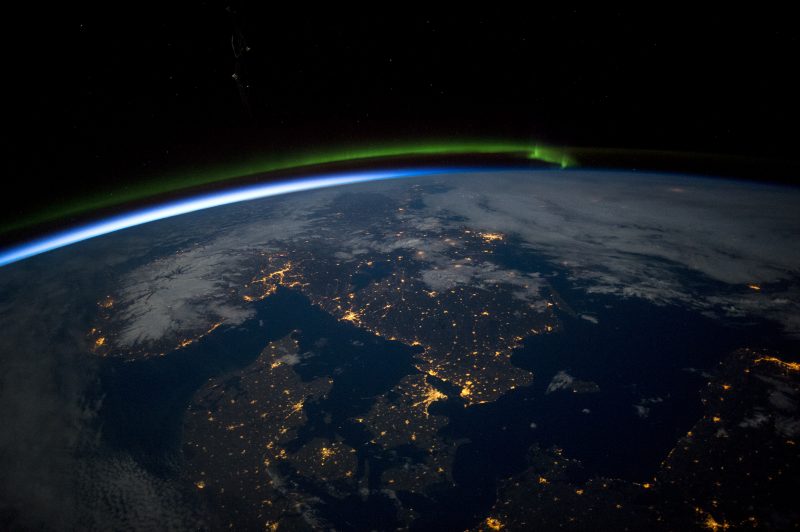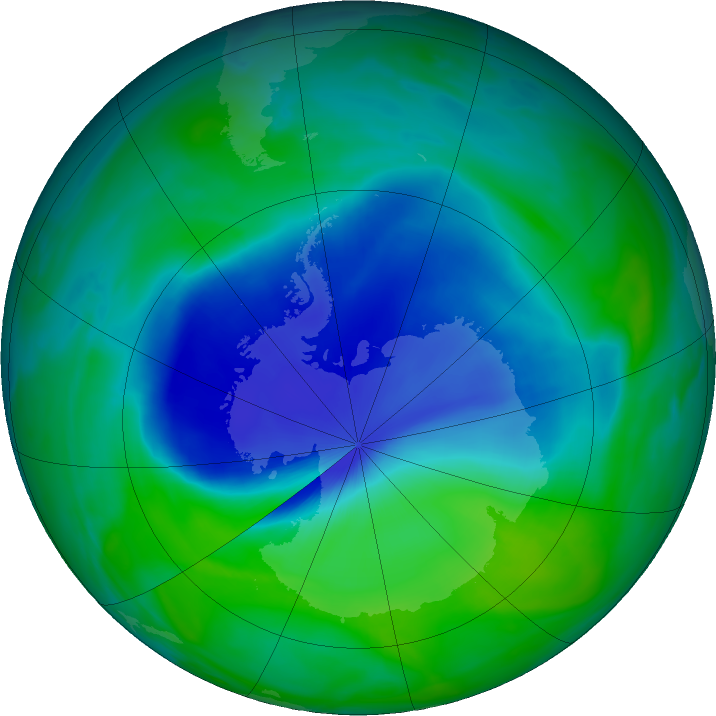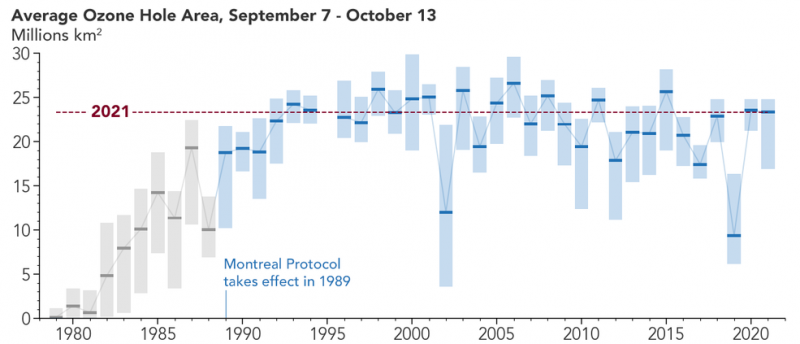
On January 23, 1978, Sweden became the first country on Earth to ban aerosol sprays propelled by chlorofluorocarbons (CFCs). Scientific evidence had mounted that CFCs were damaging Earth’s ozone layer. Sweden acted even before the 1985 discovery of the ozone hole, which, to this day, opens up every year over Antarctica. After scientists found the ozone hole, virtually every country on Earth followed Sweden in banning CFCs, via the Montreal Protocol, an international treaty.
Sweden 1st to ban aerosol sprays
In the 1970s, scientists began to understand how chlorofluorocarbon chemicals – used as refrigerants and aerosol propellants – could destroy Earth’s ozone layer. And it became widely understood that ozone in Earth’s stratosphere protects life on Earth from harmful ultraviolet rays from the sun. Scientists realized that, as the ozone diminished due to CFCs, skin cancers and cataracts would increase.
And so some nations of the world, such as Sweden and the United States, began to ban CFCs. The U.S., for example, announced its ban on October 15, 1978.
Discovery of the ozone hole in 1985 increased the urgency to ban CFCs. In a monumental achievement of international cooperation, the original Montreal Protocol was signed and entered into force on January 1, 1989. This treaty banned the use of CFC-propelled aerosol cans and regulated other ozone-depleting substances, such as halons.
As it turned out, the switch to modern aerosol cans was easy. Most consumers didn’t notice any difference as aerosol producers began using other gases or mechanical pumps.
Since 1989, the world’s nations revised the Montreal Protocol eight times, in 1990 (London), 1991 (Nairobi), 1992 (Copenhagen), 1993 (Bangkok), 1995 (Vienna), 1997 (Montreal), 1999 (Beijing) and 2007 (Montreal). The Montreal Protocol is the only UN treaty ratified by all 198 UN member states.
The 2019 Kigali Amendment took the next step by banning some CFC replacements that are powerful greenhouse gases.

Has Earth’s ozone layer been saved?
The Montreal Protocol has worked, but recovery of the ozone layer will take time. A well-known marker for progress is the size of the ozone hole, which opens up each year over Antarctica.
Scientists knew that, in theory, certain chemicals could harm the ozone layer. But they were stunned when, in 1985, a science team reported drops of about 30% in October ozone levels over Antarctica. This finding was entirely unexpected.
Subsequent satellite observations showed the maximum area of depleted ozone — which happens near the end of Antarctic winter in September or October — rapidly growing in size. By 1992, the hole was about as large as North America.
The good news is that the ozone hole in 2019 was the smallest since observations began. The bad news is that the ozone hole grew large again in 2020 and 2021.

Big changes in ozone hole size
Scientists from NASA, NOAA and other organizations have been monitoring Earth’s ozone layer from the ground and with instruments on satellites and balloons since the 1970s. They’re mandated under the Clean Air Act to do so.
They find evidence that ozone hole growth has stopped. Conditions in Antarctica can, however, affect its size from year to year.
In 2019 the Antarctic winter was warm, so the hole grew to its smallest size since its first detection. The years 2020 and 2021, on the other hand, saw colder than average winters in Antarctica, so the hole grew again. In 2020 it was at its 12th-greatest extent ever. When it reached maximum size for 2021 on October 7, it was at its 13th-greatest extent.
In spite of these big changes, recovery is expected in the decades ahead, with projections suggesting that stratospheric ozone will return to 1980 levels between the years 2050 and 2070.
Bottom line: On January 23, 1978, Sweden became the first country to announce it would ban aerosol sprays containing chlorofluorocarbons (CFCs). This post outlines the history of our knowledge of ozone depletion and international agreements banning CFCs, and it gives an update on the changing Antarctic ozone hole in recent years.
Via Chlorofluorocarbons and Ozone Depletion
Via United Nations Environment Programme: Ozone Secretariat
Via United States Environmental Protection Agency: Ozone Layer Protection
Read more: Possible new threat to Earth’s ozone layer
The post Sweden 1st to ban aerosol sprays January 23, 1978 first appeared on EarthSky.
0 Commentaires